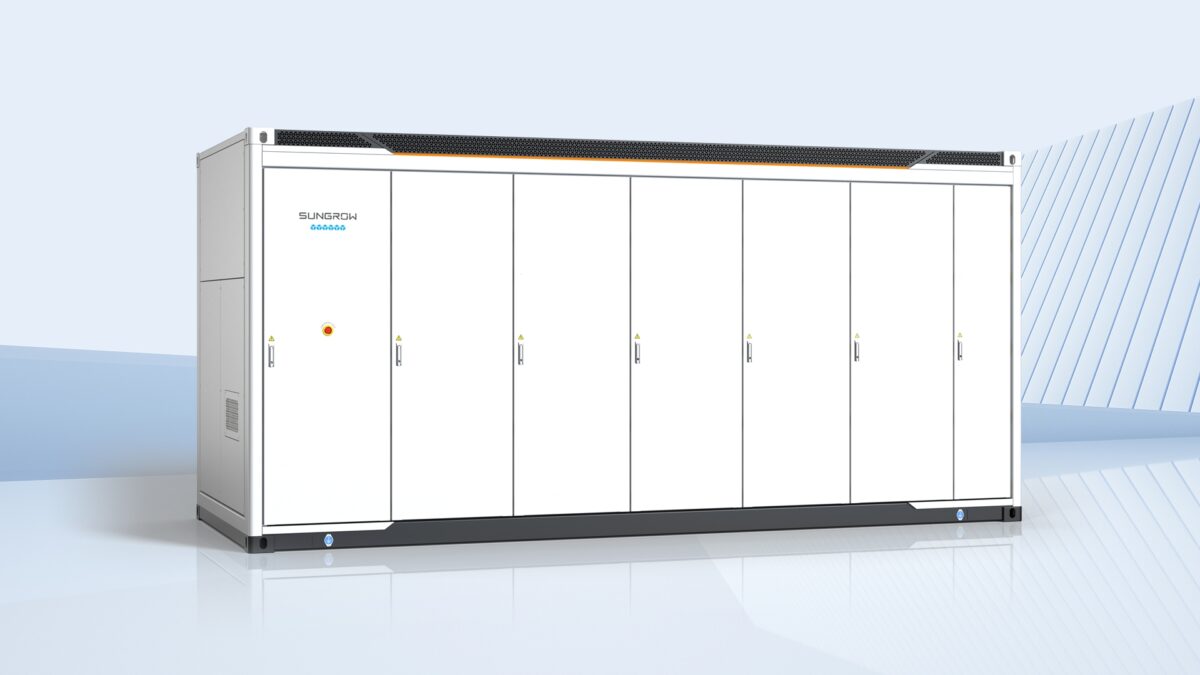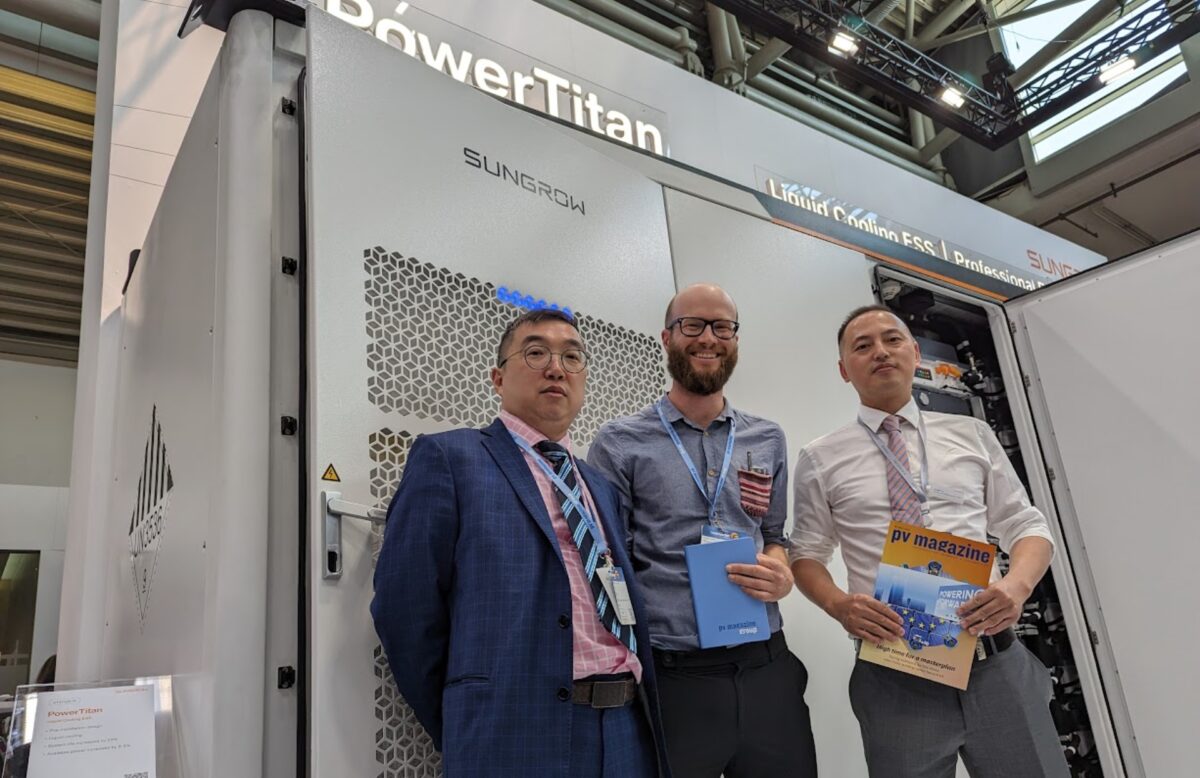James Li of Sungrow Power Europe shared insights on the inverter manufacturer's new utility-scale energy storage system (ESS), the PowerTitan 2.0 ESS. Li discussed the purpose of the solution, enhancements over the previous version, regional availability, the successful implementation of all-liquid cooling, and density advantages.
pv magazine: It's great to see your announcement of the PowerTitan 2.0 ESS. Can you tell us what has changed from the PowerTitan to the new PowerTitan 2.0?
James Li: The main change is based on valuable feedback we received from customers in the UK, Israel, and other places. They expressed a need for higher power density, particularly in areas where land availability is limited. As storage demands move closer to residential and urban areas, the cost of land is rising, and noise has become a concern. They requested a smaller system footprint. That's why we introduced the PowerTitan 2.0, offering a 5 MWh battery and a 2.5 MW PCS.
We have doubled the density while fitting everything, including the PCS, into a 20-foot container. It's quite impressive to have the whole system in such a compact container, making logistics easier.
Has the shift to liquid cooling enabled this change? Or was there something else?
Li: When we initially launched the first generation, we already had future product options in mind. It required significant engineering efforts to incorporate liquid cooling into our product swiftly. It's our first time using liquid cooling for the entire system, replacing the previous air cooling method.
Liquid cooling is applied to both the PCS and battery storage, providing advantages in terms of thermal management. With air cooling, there is a temperature difference of around 10 degrees, whereas with liquid cooling, it reduces to about 2.5 degrees. This translates to an extended lifespan of approximately two years, which is significant. Additionally, the string PCS allows for individual charging and discharging of battery racks, resulting in over 7% increased energy capacity during the life cycle and improved overall efficiency.
What was the main challenge you faced in introducing liquid cooling to the market?
Li: Designing air cooling systems is relatively easier in terms of thermal management and heat flow for cooling the entire system. On the other hand, liquid cooling necessitates more meticulous design considerations, including pipe layout to ensure efficient cooling and proper flow direction. This process takes time and careful control. Despite the additional design constraints, liquid cooling provides better overall control, making it highly effective. It particularly suits utilities facing land constraints, especially those seeking installations with more than 20 MWh of energy storage.
For a 100 MWh energy storage project using the PowerTitan 2.0, it will only occupy approximately 1,200 square meters, significantly reducing the required land footprint.

How does this approach differ from other solutions in the same market segment? How effective is it?
Li: The PowerTitan 2.0 is a professional integration of Sungrow’s power electronics, electrochemistry, and power grid support technologies. The PowerTitan 2.0 distinguishes itself in terms of its 20ft container size, which is the smallest in the market segment. The high density of the system positions us as the leading choice for transportation and logistics. Although it is heavier than the first generation, it can still be easily transported within a 20-foot container.
Another key aspect is the adoption of liquid cooling for both the PCS and the battery. This not only provides superior thermal management but also significantly reduces noise. As we see a shift towards storage systems located closer to residential areas, the reduced noise level of around 4 dB, on a log scale, which makes it a lot, becomes highly advantageous. The new system operates at approximately 75 dB, compared to the previous 79 dB.
However, the most significant advantage lies in its efficient land utilization, which has been our primary focus.
Are you still offering the original PowerTitan alongside the PowerTitan 2.0?
Li: To avoid confusion, we continue to offer the original PowerTitan to all customers. However, the PowerTitan 2.0 is only available as an option in specific regions. These regions include Israel, the UK, the Nordics, and Ireland, where there is high demand for storage but limited land availability. In these locations, customers require higher density and longer duration for their storage systems.
The PowerTitan 2.0 is specifically designed to meet these customer requirements and is not available in countries like Germany, where the grid capacity is larger.
Is the liquid cooling option more expensive?
Li: Overall, we believe that offering the liquid cooling solution with the PowerTitan 2.0 can deliver cost savings. The smaller size, higher density batteries, and integration into a single 20-foot container result in overall savings for customers when considering all capital and operational expenses. This reduction in size by approximately 30% and the extended service life of two years contribute to real savings.
While the PowerTitan 2.0 may have a higher unit cost, taking into account all capital and operational expenses, it proves to be a cost-effective solution.
Based on your experience with PowerTitan installations in the field, what kind of feedback have you received from customers?
Li: Customers have become more professional in their approach, and we have likewise become more professional in response to their needs. For example, customers increasingly demand greater assurance when it comes to firefighting systems. Our system meets or exceeds all requirements and carries the CE marking. However, some customers, particularly in the USA who work with consultants, also seek UL certification. We continually strive for full compliance in all regions, providing evidence and test reports to offer customers the highest level of confidence.
This content is protected by copyright and may not be reused. If you want to cooperate with us and would like to reuse some of our content, please contact: editors@pv-magazine.com.




1 comment
By submitting this form you agree to pv magazine using your data for the purposes of publishing your comment.
Your personal data will only be disclosed or otherwise transmitted to third parties for the purposes of spam filtering or if this is necessary for technical maintenance of the website. Any other transfer to third parties will not take place unless this is justified on the basis of applicable data protection regulations or if pv magazine is legally obliged to do so.
You may revoke this consent at any time with effect for the future, in which case your personal data will be deleted immediately. Otherwise, your data will be deleted if pv magazine has processed your request or the purpose of data storage is fulfilled.
Further information on data privacy can be found in our Data Protection Policy.